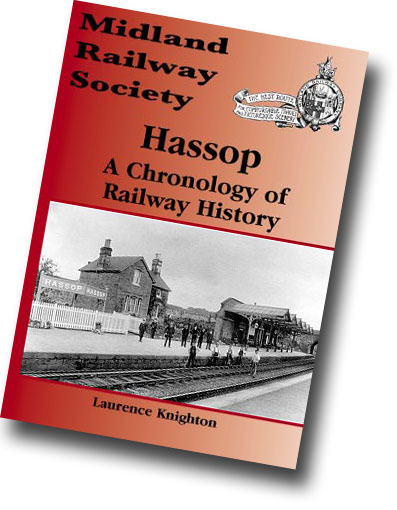Click here to download an order form for payments by cheque (UK customers only).
Secure online ordering by Paypal or credit / debit card is available by clicking on the relevant button below.
Home | Railway History | Local History | Staffordshire Bull Terriers | Literary Drinkers
Please request a quote for multiple purchases to benefit from reduced postage!
 Hassop - A Chronology of Railway History : ISBN 0-9537486-5-0
Hassop - A Chronology of Railway History : ISBN 0-9537486-5-0
by Laurence Knighton (Midland Railway Society).
Published 2004 - 44 pages, illustrated, maps.
A4 - Softback : £6.50 from bookstores, £7.50 (mail order).
Hassop station was situated 153 miles 65 chains from St. Pancras on the Derby to Manchester main line between Bakewell and Great Longstone. It was the station for Baslow and one of the three stations for Chatsworth, the home of the Duke of Devonshire, the others being Rowsley and Bakewell.
The Hassop station Inn, which was situated adjacent to the station entrance was constructed by the Chatsworth Estate. Probably because of these factors, the passenger station was one of the large and imposing structures on the line rather than the cottage type to be seen at neighbouring Great Longstone station.
It was always 'a busy place' as far as goods traffic was concerned, with spar and stone traffic forwarded and coal traffic received. Cattle and cattle cake were important traffics as well as grain and raw cotton / yarn associated with Calver Mill.
Hardly a dwelling could be seen from the station. Hassop itself being a hamlet rather than a village, with the result that passenger traffic was not buoyant and the rather minimal service of trains was withdrawn from 17th August, 1942.

